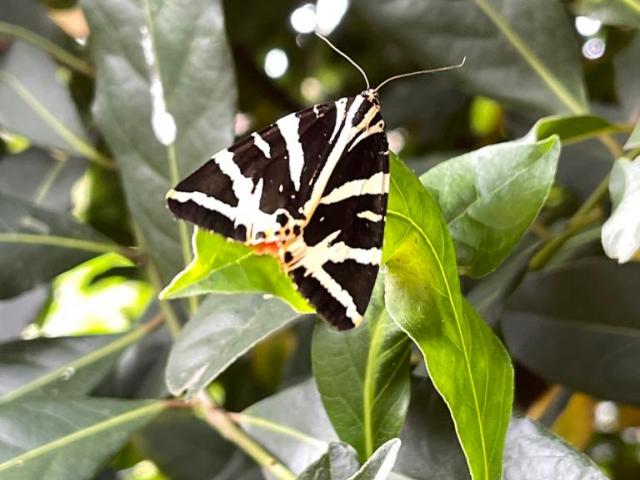
Butterfly Conservation has been collecting records of the Jersey Tiger, which over the last 20 years has dramatically expanded its range. The moth is now regularly seen in Devon, Dorset, Hampshire, Sussex and Kent and has even expanded its range as far as London.
In South Wales, the first ever sighting of the Jersey Tiger was on Flat Holm Island near Cardiff in 2008, but new records indicate that it is now breeding on the mainland in the south-east of the country.

Butterfly Conservation Officer for Wales, George Tordoff, said: “It is great to see that this spectacular moth is becoming established in South Wales. The recent records between Newport and Barry strongly suggest that it is now breeding on the Welsh coast and is likely to continue to spread in the future. The South Wales Branch of Butterfly Conservation will certainly be on the lookout for more of these beauties next year.”
One of the most attractive of the Tiger moths, it has black and creamy-white striped markings on its forewing and a red, orange or yellow hindwing. It is also the only species of Tiger moth in the UK to have actual stripes - all other species have a spotted or blotched pattern on their wings.
The hairy caterpillars of the Jersey Tiger feed on herbaceous plants like nettles from September until May and the moth’s main flight period runs between July and September.
 George added: "The Jersey Tiger flies by day as well as at night and people often mistake it for a butterfly because they don't realise moths can be so colourful. It is an easy species to record because it can be spotted in the daytime and we hope that people will send us more sightings in the future. Because the caterpillars feed on a range of plants, it could turn up almost anywhere."
George added: "The Jersey Tiger flies by day as well as at night and people often mistake it for a butterfly because they don't realise moths can be so colourful. It is an easy species to record because it can be spotted in the daytime and we hope that people will send us more sightings in the future. Because the caterpillars feed on a range of plants, it could turn up almost anywhere."
If you spot any Jersey Tiger moth caterpillars, please post a photo to the Butterfly Conservation Facebook page or tweet @Savebutterflies

